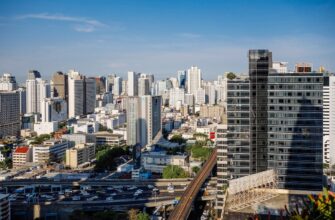- Understanding USD/IDR Exchange Rates
- Key Factors Influencing USD/IDR Rates
- Historical USD/IDR Rate Trends
- Getting the Best Exchange Rates
- Business Implications of USD/IDR Fluctuations
- Frequently Asked Questions (FAQ)
- What’s the current USD to IDR exchange rate?
- Why does the Indonesian Rupiah keep weakening?
- Where’s the safest place to exchange USD to IDR?
- How often do USD/IDR rates update?
- Should I exchange money before traveling to Indonesia?
- Can I profit from USD/IDR rate changes?
- How do central banks influence USD/IDR?
Understanding USD/IDR Exchange Rates
The USD/IDR exchange rate represents how many Indonesian Rupiah (IDR) one US Dollar (USD) can buy. This currency pair is crucial for travelers, investors, and businesses engaged in US-Indonesia transactions. As Indonesia’s economy grows, understanding these fluctuations becomes vital for financial planning. Rates change constantly due to market forces, with even minor shifts significantly impacting large money transfers or investments.
Key Factors Influencing USD/IDR Rates
Multiple economic and geopolitical elements drive USD/IDR movements:
- Interest Rate Policies: US Federal Reserve and Bank Indonesia decisions directly impact currency attractiveness
- Commodity Prices: Indonesia’s export-driven economy (palm oil, coal) strengthens IDR when prices rise
- Political Stability: Elections and policy changes in either country cause volatility
- Inflation Differentials: Higher Indonesian inflation typically weakens IDR against USD
- Global Risk Sentiment: IDR often falls during economic uncertainty as investors seek USD safety
- Trade Balances: Indonesia’s trade surplus with the US supports IDR valuation
Historical USD/IDR Rate Trends
Over the past decade, USD/IDR has shown notable patterns. Between 2015-2018, the pair climbed from 13,000 to nearly 15,000 amid US rate hikes and commodity slumps. Post-pandemic recovery saw temporary strengthening of IDR to 14,200 range (2021-2022), before climbing above 16,000 in 2023 due to aggressive US monetary tightening. Historically, IDR demonstrates higher volatility during Q1 (tax season) and Q3 (monsoon export disruptions). Long-term depreciation trends reflect Indonesia’s growth-inflation balance but recent infrastructure investments aim to stabilize the currency.
Getting the Best Exchange Rates
Maximize your currency conversion with these proven strategies:
- Monitor Live Rates: Use apps like XE or Reuters to track real-time movements
- Avoid Airport Kiosks: Rates here are typically 10-15% worse than banks
- Consider Limit Orders: Set target rates with brokers to automate conversions
- Compare Transfer Services: Wise and OFX often offer better rates than traditional banks
- Watch Transfer Fees: Some providers offer ‘zero-fee’ transfers but compensate with poor rates
- Time Large Transfers: Mid-week mornings (Jakarta time) often see lower volatility
Business Implications of USD/IDR Fluctuations
For companies operating across these currencies, rate shifts directly impact profitability. Importers paying USD face higher costs when IDR weakens, while exporters benefit. Multinationals use hedging instruments like forward contracts to lock in rates 3-12 months ahead. Indonesian businesses with dollar-denominated debt face increased repayment burdens during IDR depreciation. Smart treasury management involves diversifying currency holdings and using natural hedging through localized production.
Frequently Asked Questions (FAQ)
What’s the current USD to IDR exchange rate?
Rates fluctuate constantly. As of mid-2024, 1 USD averages 16,200-16,500 IDR. Check financial platforms like Bloomberg or TradingView for live rates.
Why does the Indonesian Rupiah keep weakening?
IDR faces pressure from US interest rate hikes, commodity price volatility, and capital outflows during global uncertainty. Structural factors like current account deficits also contribute.
Where’s the safest place to exchange USD to IDR?
Authorized money changers (like PT. Dirgantara) and major banks (BCA, Mandiri) offer security and competitive rates. Avoid unlicensed street vendors.
How often do USD/IDR rates update?
Rates change by the second in forex markets. Banks typically update rates 1-3 times daily, while money changers adjust throughout business hours.
Should I exchange money before traveling to Indonesia?
Carry minimal USD for emergencies, but exchange most funds in Indonesia for better rates. ATMs offer fair conversions but check your bank’s foreign transaction fees.
Can I profit from USD/IDR rate changes?
Currency trading carries high risk. While forex platforms allow speculation, most individuals lose money. Long-term investors consider IDR assets during periods of currency undervaluation.
How do central banks influence USD/IDR?
Bank Indonesia intervenes by buying/selling USD reserves and adjusting interest rates. The Fed’s policies indirectly affect IDR through global USD liquidity.








